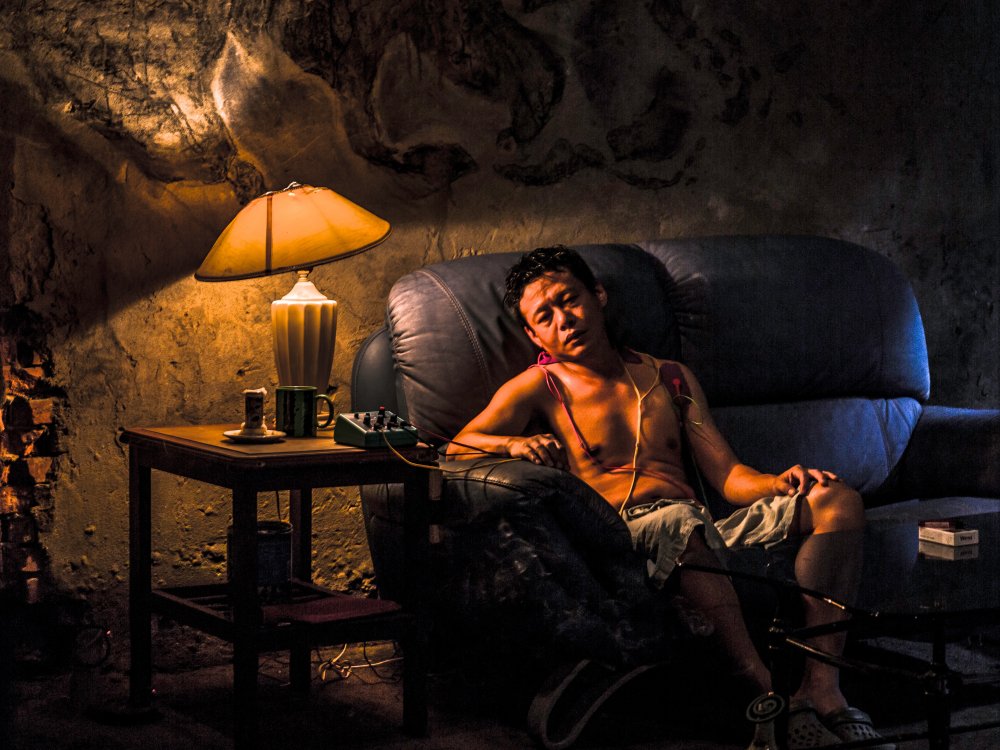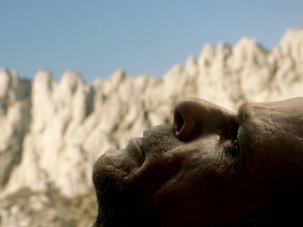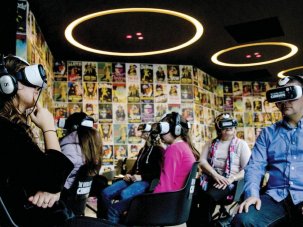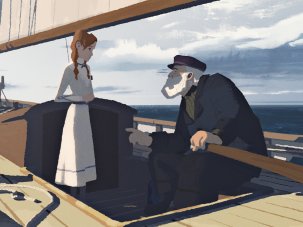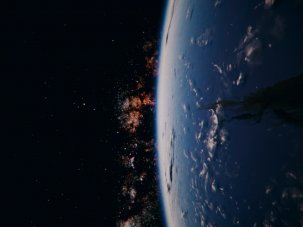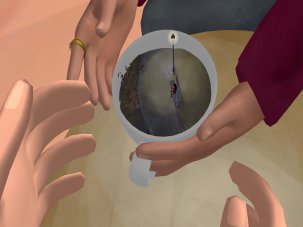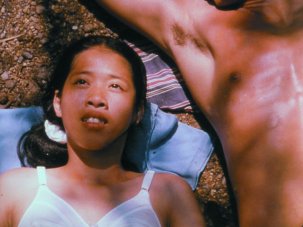At the time of the release of his digitally shot Stray Dogs (2013) Tsai Ming-liang stated that he was retiring from 35mm narrative feature filmmaking and the exhibition of his films in commercial cinemas. As Tsai’s proliferating work has migrated to digital formats, non-narrative and short forms, as well as returning to performance, theatre, and art and museum contexts, retiring might mean many things. At the age of 61, Tsai is hardly at the ‘end’ of his career. But how might we understand what Blake Williams has called Tsai’s “late digital period”?
Tsai Ming-liang: The Deserted, a weekend programme of the Taiwanese director’s recent works, screened at Tate Modern 5-7 April 2019, and The Deserted VR cinematic experience at Asia House 4-8 April, as part of the Taiwan Film Festival UK 2019.
The recent spotlight on Tsai’s oeuvre at the Tate Modern – curated by the filmmaker himself – provided occasion for such reflection. The event’s title is drawn from Tsai’s 2017 VR film The Deserted, presented in conjunction with the Taiwan Film Festival. The weekend spanned both such recent ventures in VR and cinematic portraiture, with the UK premiere of Your Face and Light (both 2018), revisited older or lesser seen short works, as well as a 35mm screening of the now canonical cinephile elegy Goodbye Dragon Inn (2003) and the documentary conversation Afternoon (2015), along with a masterclass. Tsai, who had not been in London since his 2007 retro at the BFI, brought with him a surprise guest, his avatar and collaborator of 30 years Lee Kang-sheng. Lee’s presence foregrounded how Tsai’s preoccupations have long entailed his camera’s relationship to the actor’s transfixing performances, unfolding in time, on film.
Just as Stray Dogs pointed to the durational potentiality of Tsai’s cinema in a newly digital idiom, Tsai has since clearly remained committed to testing the boundaries of film as spatio-temporal medium as well as its sites of exhibition. During his masterclass, he discussed how he mounted Stray Dogs as an installation in the Museum of National Taipei University of Education in 2014. Audiences frequently camped out, sleeping in exhibition spaces in overnight events and performances.
Regaining a control over the conditions of screening, Tsai has found leaving commercial distribution and film financing an amenable and productive shift. Yet he insists on his ongoing practice as fundamentally cinematic at its core. Tsai suggestively questioned, “film is a mysterious invention: is the frame a limitation, or an encouragement to extend into the beyond?”
Tsai has been exploring that beyond for his whole career. Such an edgeless elsewhere spills out and over in The Deserted, made with funds from the VR tech giant HTC and Jaunt China for $1.5 million, and previously presented at the Venice Film Festival in 2017. Shown in London for the first time in 8K, it offered a distinct contrast with Tsai’s pristine images rendered in celluloid.
Notably, as the experience begins, credits announce “a film by Tsai Ming-liang.” What surprises is how consistent Tsai’s concerns remain even in virtual reality: there is water, loneliness, decomposition, fleeting contact, the dailiness of gesture. But Tsai squares two elements that may seem irreconcilable: the fixed, stationary frame as a condition for an exploration of cinematic duration, and the panoramic, “immersive” variability of the VR environment.
Tsai’s preoccupations with the affective life of ruins and of the resonances of the body’s routine of rest and toil are given a frameless frame, bestowed by a sculptural and painterly sensibility enlivened by how images render in VR. The Deserted also continues the impulses of his films towards tableau and panorama – recall the expansive view of the interior of a waterlogged industrial ruin in I Don’t Want to Sleep Alone, the fish-eye scale of the subterranean walkway in The Wayward Cloud, or the painted mural in Stray Dogs. If Tsai’s camera was always attempting to frame an improbable expanse, to place in one image multiple impossible spatial perspectives, so too this latest pursues this desire for achieving a full circle with new means.
Tsai employs VR’s 360 degree surround (which here renders as less interactive than one might expect from the mode’s allegiance with video game space) to construct an otherworldly yet lived-in outpost for the spectator’s own ghostly wanderings. The spare narrative elements find Hsiao Kang (Lee) living in an abandoned concrete apartment complex in a rural area, mouldering wet slab walls with pane-less windows that gash out to an overgrown verdant yonder. Hsiao Kang finds creaturely companionship from a silvery white fish that is housed in a massive plastic tub in the middle of his apartment. He is visited by ghosts who haunt this ruin – his mother, who cooks for him and watches him garden; a woman dressed in a white betrothal gown, and another woman who appears with him in a bathing scene that turns beguilingly erotic.
It is not incidental that the location used neighbours where Tsai and Lee have lived for five years. The film’s Mandarin title is The House of Lan Re Temple, referencing the mythic site of a Chinese ghost story where spirits gather. During his conversations at Tate, the filmmaker extrapolated that this locale – seen also in the documentary Afternoon – could also serve as the spectator’s “home”.
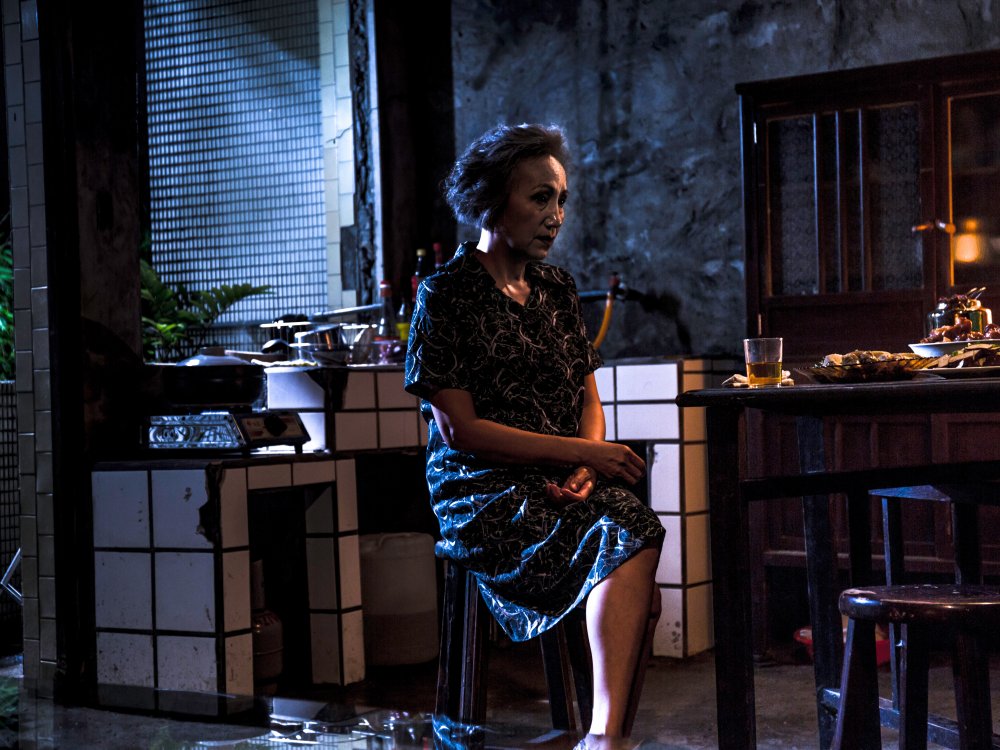
The Deserted (2017)
Taking that invitation to loiter and linger in this space among such ghostly revenants, one finds The Deserted’s image-sound repertoire eerily haptic. It entices the viewer into a unique photogenic (VR-genic?) reverie, as wind shakes green fronds, rain gushes into open windows, steam fogs the air and light beams dapple walls. Everyday gestures and habits cathect our desire for this place – drinking tea, bathing, smoking. Moths fly into and out of damp rooms, water drips and permeates the cracked stone, dust turns to mud, a worm crawls across the wall.
Such moments of contingency overwhelm, adding density to a deeply volumetric sense of space. The viscid distance between our view and the bodies of Tsai’s actors makes it appear as though they are floating in a snow-globe or are suspended in sticky amber. One wonders if a VR experience can make one cry? Tsai answers in the affirmative, as this particular virtuality summons a nostalgic desire for home. As rain dramatically pours and gushes in an unexpected sex scene, the sound of nature’s throbbing persistence floods the senses and assails the emotions.
Perhaps this is because we have been observing the ageing of Lee’s body at close range for years. Watching Hsiao Kang go about his routines in VR in a location very near to Lee’s actual home with Tsai makes the experience more touching. The space’s decay is both real and sculpturally styled, as the textures are enhanced with wispy wallpaper peeling off in chunks, and cracks and stains in the walls registering the deeper fissures of time’s wearing down of physical surfaces, like mottled, sagging skin taking heavy entropic breaths.
Hsiao Kang’s body is also marked by the time of illness, as he applies electrotherapy with a buzzing device in the first take, as the spectral mother prepares a meal at the kitchen, or as he sleeps on the couch. The clicking ministrations of the electrotherapy, the boiling water of the kettle, the hissing steam, as well as the ambience of crickets, birds, rain and wind, all add to the thicket of sedimented emotions.
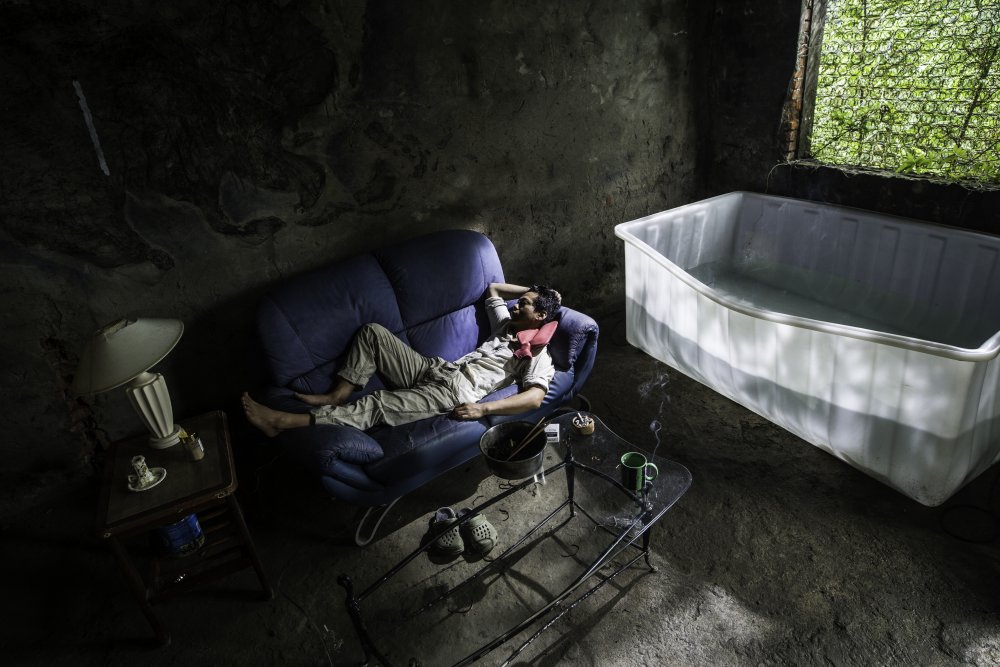
The Deserted (2017)
VR has its own demands, which seem at odds with Tsai’s films’ trademark slowness and expectation of attentive patience, yet these protocols somehow converge. The film is 56 minutes long, which is long for a VR work, and the headset is rather heavy. While one swivels in a chair to explore the space in the round, interactivity is in fact limited by how Tsai’s staging compels the gaze to remain on performer’s bodies. The heaviness of the headset seems suitable to the gravity of endurance in Tsai’s cinema: that we should also ironically feel such “pains in the neck” as we are enclosed in this absorbing world seems only fitting for a cinema so concerned with the body’s capacity to withstand the pressures of time, stress and gravity. The actor’s (and director’s) real ailments are frankly discussed in Afternoon, as Tsai and Lee converse about how ageing has changed their sense of time and their relationship to each other. The shift to a more personal and experimental mode for Tsai has also allowed a nonfictional address of such changes.
The range of Tsai’s recent works also reminds how central physical endurance and cinematic duration continue to be in his oeuvre, now perhaps catalysed by digital duration’s limitlessness. Your Face takes up its Warholian inheritance with a touch of bemusement. We can see it as a companion work to The Deserted – as Tsai has stated that close-ups were unavailable to him when filming for VR – as well as a continuation of his interest in close corporeal observation. The 13 faces captured, largely people in advanced age, confront the camera with disparate protocols. How does a face disclose a history? Some are silent and some converse with Tsai, whose presence and gentle questioning only reminds how much we expect silence and conversational austerity in this idiom. Tsai gives himself over to this impulse to spend time in the intimate presence of another. A sitter, revealed in credits as Lee Kang-sheng’s mother, performs face and tongue exercises as she prepares to talk, explaining that the head also requires callisthenics to remain vital and combat ageing.
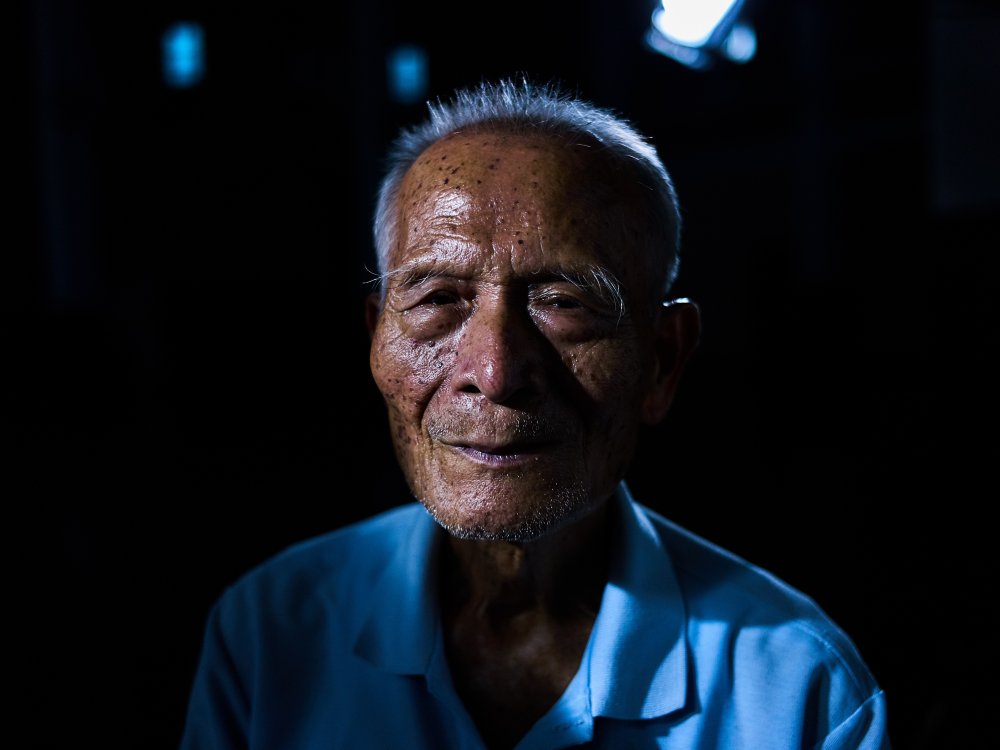
Your Face (2018)
A man likely in his 80s falls asleep before the camera, as his face slowly drifts downward, a painterly portrait gradually deframed, as his chin and mouth drop slowly below frame’s edge. Startled, he wakes, only to drift off again. One man talks of his gambling addiction, and others relay their family and romantic histories. One woman awkwardly darts her eyes back and forth, moving her gaze towards the edge of the frame, refusing to look at the zone where Tsai and the camera rest. Lee Kang-sheng relates memories of his father. Tender in his approach to the wrinkled and worn faces of his subjects and their integral personhood, Tsai stewards their presence, as the genre of the detached, stilled portrait edges into intimate confessions.
A score, a rare thing in Tsai’s cinema, was written for the film by Ryuichi Sakamoto, and is used to punctuate moments of silence in the portraits, in some instances giving the effect of tuning to a frequency. Radically different in form from The Deserted, Your Face too focuses on what it means to live in and with an ageing body, and to reflect on past selves, interweaving the nostalgic, reflective tenor of much of Tsai’s cinema.
A linked short film, titled Light, creates a triptych, as it features a portrait of Taipei’s Zhongshan Hall, where Your Face was filmed. The site is historically significant as where the Japanese surrender formally took place at the end of WWII, ending the occupation, but is also a personally resonant locus of Tsai’s activities as filmmaker, café owner and ticket seller. Just as his long-take portrait of the empty Fu Shan movie theatre in Goodbye Dragon Inn eventually revealed to Tsai “the face of cinema”, so too the empty vestibules and hallways of the Zhongshan offer novel arrangements that capture a history that lives in the obduracy of its nonhuman surfaces, reflecting and directing light. The shiny wood floors, stairwells, porticos and chandeliers sit as immobile witnesses to the activities and labours that remain off-frame.
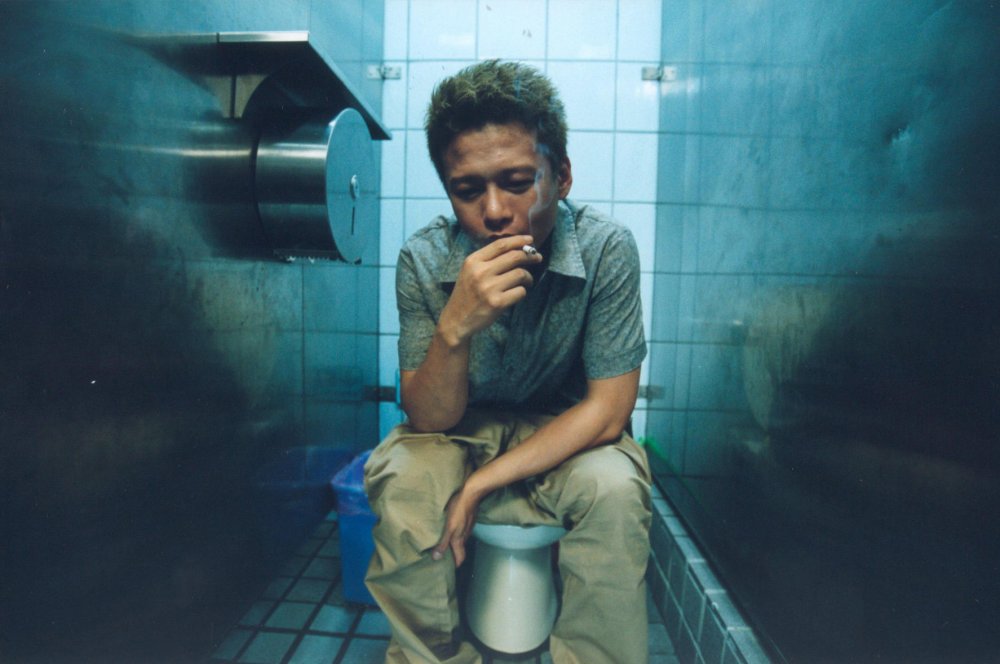
The Skywalk is Gone (2002)
A selection of shorts highlighted how the form has in this “late digital” period become a flexible format for developing new directions and projects. Tsai presented how his shorts have bridged diegetic worlds between features, in the case of The Skywalk is Gone (2002), which connected the watchseller and Shiang-chyi from What Time is It There? with Lee’s porn actor protagonist in The Wayward Cloud.
Shorts also have allowed Tsai to excavate new concepts – as in the Walker series, which has over eight films charted Lee’s practice of decelerated walking as the character Xuanzuang, the historical monk, across varied cities. No No Sleep (2015), one part of the series, takes a queer turn as the monk, unswathed from his robes, arrives at a sauna and capsule hotel, where he bathes next to another silent visitor, sweats and sleeps.
Autumn Days (2015), another portrait film, works through a bisected structure. Its subject Nogami Teruyo, Akira Kurosawa’s screenwriter for 50 years, is at first heard speaking about her career atop a black screen, and is then seen silently sitting with Lee on a bench under crepuscular autumn light.
Recent works such as The Deserted and Your Face, even as they centre memory, mortality and ageing as subjects, attest to how inexact a claim of retirement is for the filmmaker’s creative practice. But we could also think of retiring less as a quitting or a refusal of filmmaking tout court, but rather as a rich motif that allows us to view Tsai’s moving images through its prism. Retiring suggests a time beyond work and the conscription of clock time to labour, an acceptance of ageing that invites thinking of the body’s finitude, of certain ends, memories and legacies – held in cinematic objects, images, sounds. But Tsai’s films also suggest that retiring facilitates an encounter with the world and activities that have long been deferred or delayed: preparing for sleep, tending to a garden, living somewhere where the view opens to something more bucolic and restful, an ecology located elsewhere, in which co-presence, intimacy and communing may be the most durable yet ineffable things.
Retiring in its most immediate subjective sense discloses the decomposition of the body’s suppleness and vitality. But different rhythms emerge: the creaking joints and effortful breaths, filtered through weary lungs that have smoked many cigarettes, a mouth that has drunk many liquors and chewed on much fat, all sensual imbibements remembered with that same pulsing, mournful heart. As if a treatise, Tsai’s cinema intimates: as the body fades, the spirit grows ardent.
-
The Digital Edition and Archive quick link
Log in here to your digital edition and archive subscription, take a look at the packages on offer and buy a subscription.




